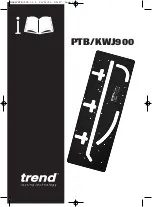
7
REV. 6/17
GB2628 INSTALLATION TOOL
When the tool is connected to a hydraulic powerunit, operation is controlled by an electric actuator (240122) (GB2628) or a piloted air
actuator (240123) (GB2628A) in the handle. When the actuator is depressed, a directional valve in the hydraulic powerunit directs oil
to the front side of the piston forcing it and the internal component in the nose assembly rear-ward. This action causes the jaws to
clamp onto the fastener pintail and pull the sheets together. The anvil is forced forward, swaging the collar into locking grooves of
the fastener. Further force breaks the pintail off, approximately flush with the collar. When the piston is in the rear position flats are
exposed unloading the pressurized oil.
When the actuator is released, the directional valve directs the oil to the back of the piston pushing the nose assembly off of the swaged
fastener. The pintail ejector hydraulically pushes the spent pintail out of the nose assembly
.
When the piston is full forward pressure
is built shutting of the hydraulic powerunit.
HYDRAULIC DIAGRAM
PRINCIPLE OF OPERATION
Piston Travel
PULL Cycle
RETURN Cycle
Piston Travel
Pintail
Ejector
Relief
Valve
Actuator
PULL Pressure
RETURN Pressure
Image may not reflect actual tool
Pressurized Oil
Return Oil
Relief
Valve
Actuator
PULL Pressure
RETURN Pressure
Pintail
Ejector





































